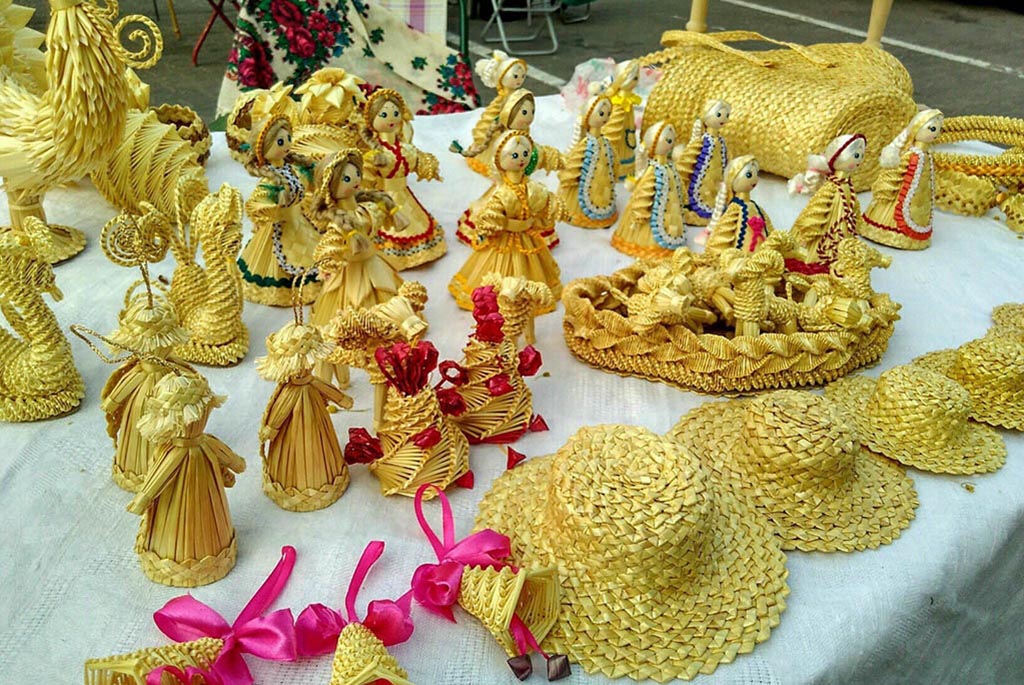Imagine a golden thread woven into the very fabric of Belarusian culture – that is straw weaving. An art form that seems to capture the breath of the fields, the warmth of sunny days, and the ancient wisdom of generations past. In Belarus, straw weaving is more than just a craft – it’s a true cultural code passed down from generation to generation.
Ancient Roots
The history of straw weaving on Belarusian soil dates back thousands of years. Even in pre-Christian times, straw was used not only as a building and household material but also as a sacred symbol. It was woven into protective charms, used to decorate homes, and featured in festive rituals. Over time, this utilitarian material became a source of inspiration and artistic expression.
One of the most distinctive creations were the “pavuki” – delicate hanging structures resembling the sun’s wheel. They were suspended from ceilings during celebrations, believed to bring prosperity, harmony, and protection from evil spirits.
A Delicate Craft
Belarusian straw weavers are true artists who create wonders from the simplest of materials. In their hands, ordinary stalks of rye or wheat are transformed into works of art. Harvesting the straw is a science in itself – it’s crucial to choose the right variety, cut it at the proper time, dry it carefully, and prepare it correctly. Each straw goes through many steps before becoming part of a pattern.
Craftspeople use various techniques – from basic weaving to intricate stitching and embossing. The results are not only decorative panels and souvenirs but also true art objects: large sculptures, interior installations, and even elements of modern fashion design.
Reviving Traditions and Breathing New Life into the Craft
Today, straw weaving is experiencing a true renaissance. Interest in folk art is growing, and the creations of Belarusian artisans are gaining recognition both at home and abroad. Exhibitions, festivals, and workshops attract thousands of participants, including young people eager to connect with this ancient art form.
One of the key cultural centers is the Dudutki museum complex, where anyone can not only see straw masterpieces but also try their hand at the craft. Thanks to such initiatives, the tradition is not only being preserved but also evolving – inspiring new generations of artists.
Straw weaving has been officially recognized as an element of Belarus’s intangible cultural heritage. This is more than a formality – it’s a testament to the deep national value of the craft.
Philosophy in Every Straw
In Belarusian culture, straw symbolizes the sun, life, and abundance. The weaving process is akin to meditation. The master weaves a part of themselves into each loop – their mood, their feelings. That’s why every item carries a special energy and meaning.
Straw wreaths adorn weddings, Christmas “pavuki” still hang in homes, and figurines of animals and charms become treasured family heirlooms. These are more than souvenirs – they are fragments of living culture.
The Golden Thread of the Belarusian Soul
Straw weaving is a fine line between the past and the future, between simplicity and depth. It is a living art that remains relevant, continuing to inspire, amaze, and bring people together.
By preserving the traditions of straw weaving, Belarus preserves its soul. And everyone who touches this art – be it a viewer, a craftsman, or a student – will surely feel that golden thread connecting generations and times, making our heritage truly priceless.












